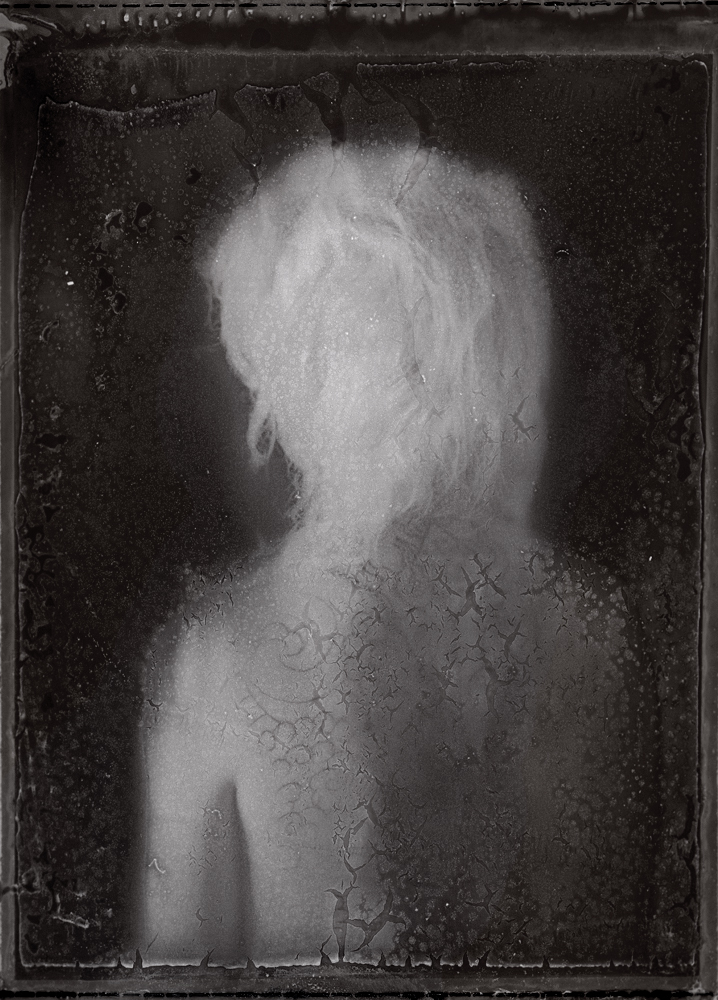Galina Kurlat interview
I met Galina Kurlat in New Orleans last December at PhotoNola. I was immediately taken by her images and had some time to chat with her about the series Safe Distance. I wanted to know more about the project and her way of working so I asked her to share some insights.
Blue Mitchell: When do you think you created your first successful photograph? What brought you to this moment?
Galina Kurlat: There is no significant moment or significant photograph that led me on my path to making the kind of work I do now. For me, the act of making images has always been about the process and the ability to work with mediums that allow for a certain amount of chaos. Honestly, I don't know if any of the images I have made are successful, but they do bring me a certain amount of pleasure when I look at them.
What is your favorite way of working?
In my work I use two different processes; Polaroid Positive/Negative film and Wet Collodion. Polaroid Positive/Negative is a B&W large format film which has been discontinued since 2008. It is a fragile medium that has a tendency to react to changes in temperature, humidity, and other environmental factors. If uncared for, the film will continue to decompose and change. The organic decomposition of the film which can slowly change the image over time attracts me to this medium. The Wet Collodion process is an in-camera process which was invented in the 1850′s, this labor-intensive process involves coating a glass plate with collodion then sensitizing it by dipping it into a bath of silver nitrate, while still wet the plate is placed in the camera and exposed. Within a few minutes of exposure, the plate must be developed, fixed and dried in order to create the Ambrotype, a positive image on a sheet of glass.
Who or what are some of your inspirations?
One day, during my last year at Pratt I walked into my childhood bedroom and realized that the magazine photo's I had plastered all over my room as a teenager were mostly images made using an antiquated photographic process. Magazine printouts from Joel Peter Witkin, Sally Mann, Minor White, Chuck Close, Michael Mazzeo and Sarah Moon hung all over my pink walls. At this time I had just begun studying wet plate with Jody Ake in NYC and was so grateful for the chance to learn a process I admired at such a young age.
I had plastered all over my room as a teenager were mostly images made using an antiquated photographic process.
What drives you to make portraits?
When spending time with a sitter, I find that they reveal so much of who they are during the session. In choosing to look at the camera or away, they choose to reveal or hide. I have struggled with intimacy with the people closest to me for years and find the experience of making a portrait with a person a way for me to connect and learn.
When shooting portraits for Safe Distance are you concerned with physical appearance or the mood inherent in your process? How does your process influence the work?
Generally, my subjects dictate my medium. For this project, I choose to use Polaroid P/N film. Much like any portrait session, the results can vary from absolutely stunning images to unfortunate mishaps due to the fragile medium.
How do you show this work in exhibitions?
This work is usually displayed as 30x40 inch prints. Although the portraits themselves are intimate, the large-scale prints both invite and repulse the viewer.
Any new projects on the horizon? What are you working on now?
I can never seem to work on just one project at a time. I still have a few more boxes of Polaroid P/N film left and I am actively seeking new subjects for Safe Distance, shooting new self-portraits for Inherent Traits, and working through some color landscape work I photographed after the fires in Bastrop, TX. Recently I took a trip to Turkey with a friend and fellow photographer April Renae. While traveling I did something I rarely do these days... Rather than seeking out specific subjects for existing bodies of work, I took photographs for the simple pleasure of making images. This open way of shooting followed me home, I now find myself making images which interest me rather than trying to fit them into the context of existing work. I hope this way of shooting transcends my older habits and allows for a continuously creative approach to photography.
Galina Kurlat was born in Moscow in 1981 and emigrated to the United States shortly after the fall of communism in 1989. She received her Bachelor of Media Arts Degree from Brooklyn’s Pratt Institute in 2005, she currently lives and works in Houston, TX. Her work has been exhibited internationally and is in a number of public and private collections, including the Museum of Fine Arts, Houston.

